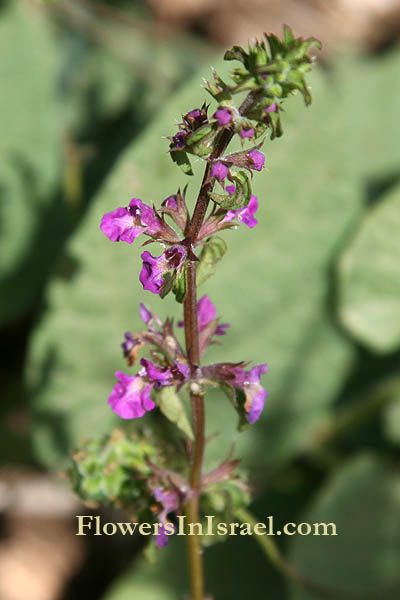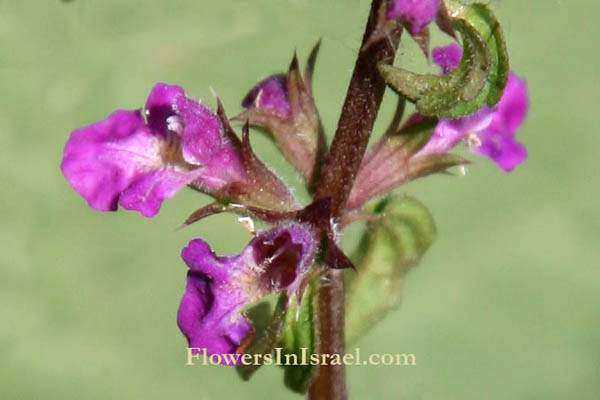Hebrew: מרווה מנוצה, Arabic: قصعين ريشي
| Scientific name: | Salvia pinnata L. | |
| Common name: | Cut-leavef sage | |
| Hebrew name: | מרווה מנוצה | |
| Arabic name: | قصعين ريشي | |
| Family: | Labiatae / Lamiaceae, שפתניים |

|
| Life form: | hemicryptophyte | |
| Stems: | Trailing stalks, hairy | |
| Leaves: | Opposite, rosette, compound, pinnate, dentate or serrate | |
| Flowers: | In whorls, large both corolla and calyx of a deep purple, blue color Purple | |
| Fruits / Pods: | Nutlets | |
| Flowering Period: | March, April, May | |
| Habitat: | Batha, Phrygana | |
| Distribution: | Mediterranean Woodlands and Shrublands, Semi-steppe shrublands | |
| Chorotype: | Mediterranean | |
| Summer shedding: | Ephemeral |

Derivation of the botanical name: Salvia, Latin salvere, to save, referring to the long-believed healing properties of salvia. Pliny the Elder was the first known to use the Latin name salvia. pinnata, "featherlike;" having leaflets arranged on each side of a common stalk. The Israeli botanists Dr. Ephraim and Hanah Hareuveni pointed out that the architecture of the vertical inflorescence of this species of Salvia resembles the shape of the Menorah, in particular—the Salvia Palaestina. Therefore, they suggested that it had inspired the design of the Menorah. Moreover, based on etymology perspectives they suggested that the Hebrew word “Marva, מרווה” (Salvia) was originated from the Hebrew word “Moriah” (the Temple Mount name), reflecting the connection between this plant and the Menorah, which was situated inside the Holy Temple in Jerusalem.
|